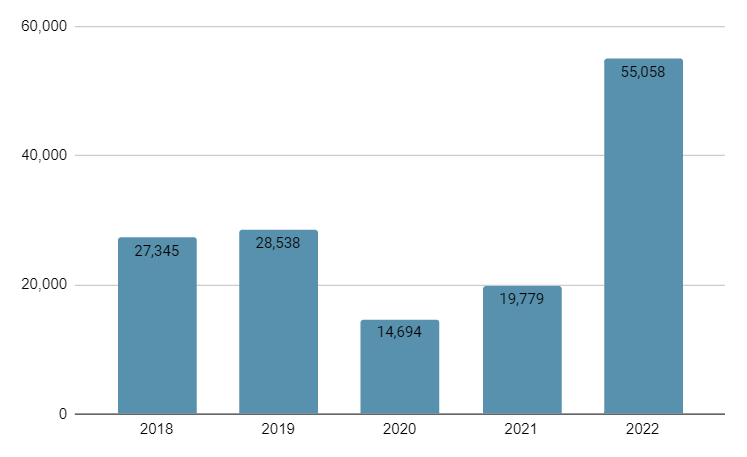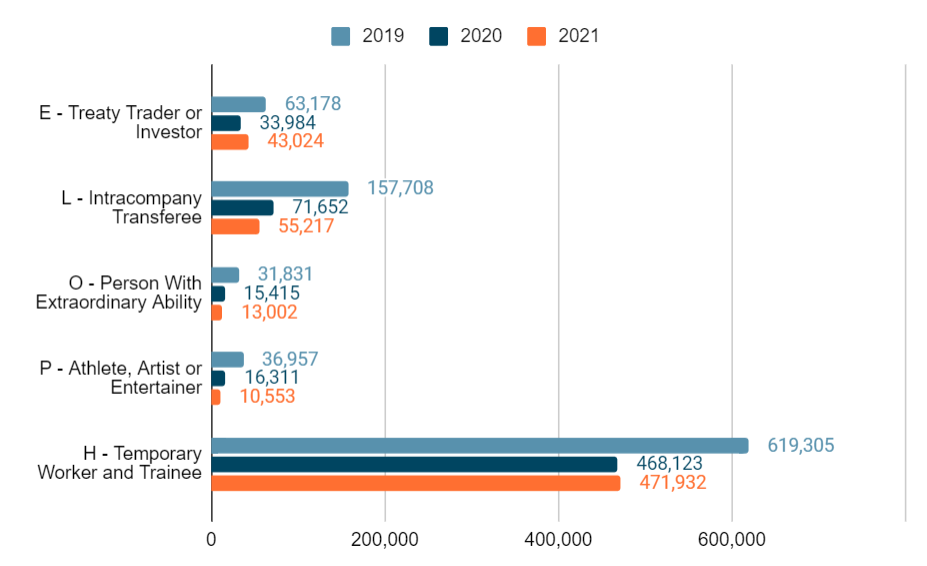A work visa, also known as an employment-based visa, is a document that allows non U.S. citizens to come to the United States and work on a temporary or permanent basis. There are multiple types of employment visas available, the right one for you will depend on the activity you’ll be performing, your qualifications, length of stay, and whether you have a job offer from a U.S. employer.
If you get a temporary work visa you will most likely be working for a specific employer that filed a petition on your behalf. Once the temporary visa expires you will be expected to exit the country, unless you obtain a status adjustment to a different visa. This is why temporary work visas are part of the nonimmigrant visa category. The most common temporary work visas include the E, H, L, P, and O categories.
On the other hand, there are visas available for those seeking to live in the United States permanently based on their job skills. There are five permanent visa options: EB-1, EB-2, EB-3, EB-4, and EB-5.
Contact Us Today To Learn More About Your Work Visa Options
Temporary work visas allow you to perform a professional activity in the United States for a specific period of time and generally for a specific employer that filed a petition on your behalf.
These are the type of temporary work visas available:
- H-1B visas: for workers of specialty occupations, DOD Cooperative Research and Development Project Workers, and Fashion Models
- I visas: for eligible members of the foreign media
- L visas: for intracompany transferees (workers of a U.S. company overseas getting transferred to the same company in their U.S. offices)
- O visas: for people with extraordinary abilities or special talent
- P visas: for internationally recognized athletes, artists or performers
- R visas: for workers or members of a religious organization
- TN NAFTA: for professionals coming from Mexico and Canada (members of the North American Free Trade Agreement)
There are five employment-based permanent work visas in the United States, each one designed to fit different professional backgrounds.
These are the type of permanent work visas available:
- First Preference EB-1: for people with extraordinary ability in the sciences, arts, education, business, or athletics. This category includes acclaimed researches and professors and multinational executives.
- Second Preference EB-2: for people with advanced degrees or with exceptional ability in the arts, sciences, or business.
- Third Preference EB-3: for professionals, skilled workers and certain unskilled workers who can perform an activity for which there are no U.S. qualified workers available.
- Fourth Preference EB-4: for special immigrants including religious workers and foreign employees of U.S. posts abroad.
- Fifth Preference EB-5: for foreign investors through direct investment or regional centers.
Note: EB-2 and EB-3 visas require a labor certification. This means that you need an employer to sponsor you and prove to the U.S. Department of Labor that there are insufficient qualified U.S. workers to fill that position. Additionally, they will have to prove that hiring a foreign worker will not have a negative impact on their U.S. employees’ work conditions.
Fiscal Years 2018-2022

Fiscal Years 2019-2021

No. A work visa allows you to live and work in the United States for as long as it has been granted for. However, once in the U.S. under a temporary nonimmigrant visa, you will need to get an Employment Authorization Document (EAD) which is commonly known as a work permit to seek employment. If on the othe hand you already have a Green Card (permanent residence) you will not need to apply for a work permit.
You will be allowed to stay in the United States for as long as your work visa is valid for. Keep in mind that if you have been sponsored by an employer, the validity of your work visa will be linked to that employment.
Yes. You will be required to attend a work visa interview to get approval. If you are applying from overseas that interview will take place in your nearest U.S. Consulate. You must notify the consulate if for any reason you will not be able to attend the interview, otherwise your case may be dismissed.
The goal of the work visa interview is to verify that all information provided is real and that you are legitimate candidate. You must be prepared to answer all questions regarding your job offer, relevant documentation, and activity you plan to perform in the U.S.
The right visa for your case depends on the activity you’re planning to perform in the United States, your qualifications, and whether you are being sponsored or self-petitioning. We highly recommend you to talk to an experienced immigration law professional to understand your options.
Please add a review



